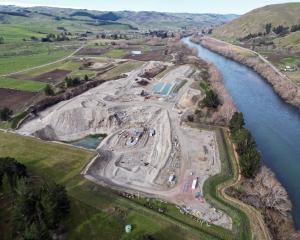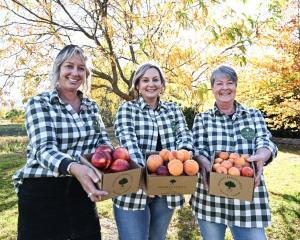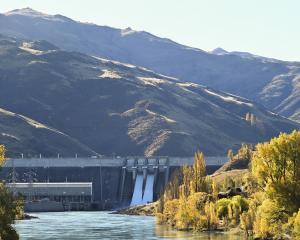Beer drinkers have unknowingly contributed to a Central Otago construction project.
Contractors working on the Clyde Wastewater project have used a glass-blended gravel for the bulk fill along Sunderland St.
Council capital projects programme manager Patrick Keenan said the process, which was part of a trial, included 300 cubic metres of material. Of that material, about 10% contained recycled glass.
‘‘This equates to approximately 10,000 24-packs of beer or 232,800 stubbies.’’
The glass was blended with pit gravel. It was topped with 150mm of gravel, which did not contain glass.
‘‘The trial was successful and the mixture appears to have worked well. This is a small part of the council’s wider sustainability strategy and we will continue to progress and improve this method.’’
He said, if feasible, the same process would be used on other council-owned roads and carriageways where project work was being done.
Glass collected through the council’s kerbside recycling programme is sent to Fulton Hogan’s Parkburn Quarry for processing.
‘‘Large [or] obvious contamination is removed by hand before it is put through a crushing plant. From here it is crushed and blended into quarry products.’’
He said the New Zealand Transport Agency and other local agencies have spent the past 10 years looking at including crushed glass in base course aggregate and infrastructure applications.
‘‘This includes testing and trials of glass material to determine the quarry products it can be included in.’’
He was pleased the crushed glass could be processed in Central Otago.
‘‘This district processing limits any carbon costs and has the potential to both save costs and improve environmental outcomes at a local level.’’
Comments
So what, if any, environmental upsides are there to having glass blended into the aggregate? It's not at all clear in this story.
There was a time of course when we reused beer, soft drink and milk bottles. Now we produce carbon emmissions manufacturing beer bottles for single use, only to then crush them up and bury them in the ground. Meanwhile, milk, juices etc get trotted out in plastic bottles, using fossil fuels and emmiting even more carbon emmissions.
The food containment industry is failing miserably, we did much better in the past.












